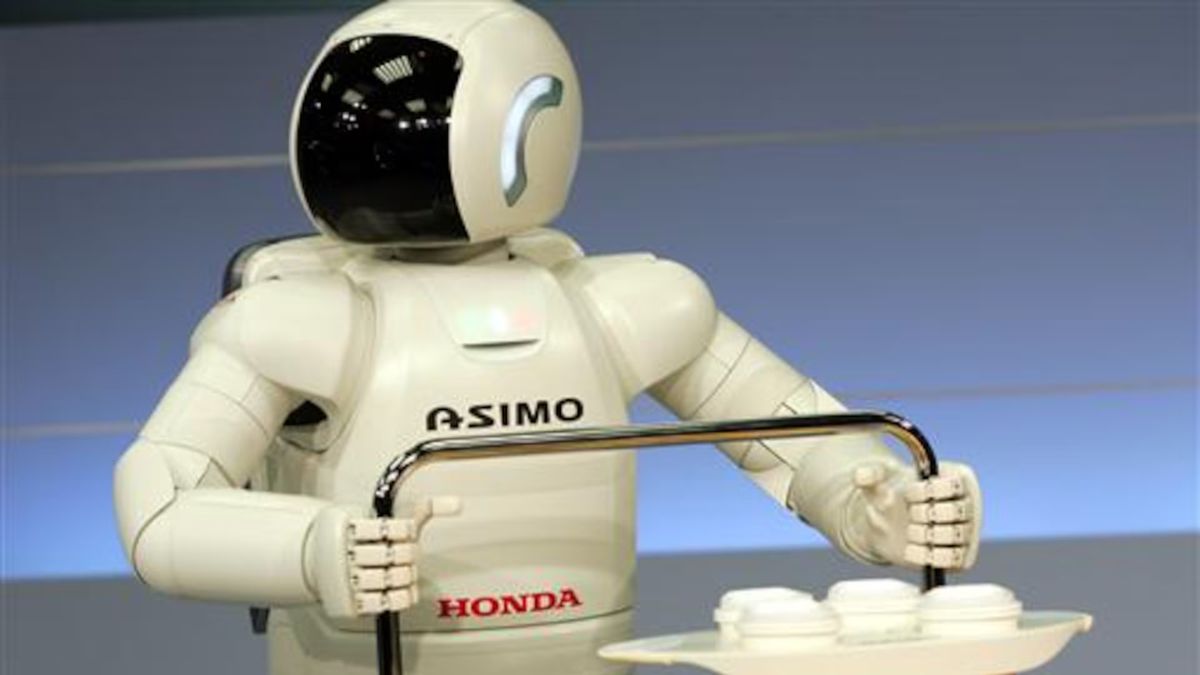In a twist straight out of a science fiction thriller, work pressure seems to have claimed its latest victim in South Korea: a robot.
Believe it or not.
On June 26, South Korea’s Gumi City Council revealed that their top administrative officer robot was discovered ‘dead,’ having seemingly thrown itself down a six-and-a-half-foot flight of stairs.
The incident has left the local community mourning what is being referred to as the country’s first robot “suicide”, The Daily Mail reports.
Here’s the rundown of what happened.
The dramatic fall
Appointed to official duty in August 2023, the robot was one of the first to be used in this capacity in the city.
Developed by Bear Robotics, a Californian robot-waiter startup, the robot worked from 9 am to 6 pm and had its civil service officer card.
According to an official cited in the AFP, the first-of-its-kind robot “helped with daily document deliveries, city promotion, and delivered information.” Unlike other robots, which can typically only use one floor, the Gumi City Council robot could call an elevator and move floors on its own.
“It was officially a part of the city hall, one of us,” one official said. “It worked diligently.”
But on Thursday afternoon, the robot suffered a dramatic fall from the stairs, leading to its early demise. Witnesses of the incident say they saw the robot mysteriously “circling in one spot as if something was there” before the incident.
Impact Shorts
More ShortsThe ‘Robot Supervisor’ was also found smashed up lying in the stairwell between the first and second floors of the council building.
After the cyborg’s sudden death, the council community has been left in a state of shock and currently, it does not plan to adopt a second robot.
Headlines in local media questioned the apparent robot suicide, saying: “Why did the diligent civil officer do it?”
The ‘depressed’ robot
After the incident, the Gumi City Council said they would launch an investigation to find the cause of the supposedly “depressed” robot’s death.
“Pieces have been collected and will be analysed by the company,” the official was quoted as saying in the AFP report.
Using robots is not something new to South Korea, in fact, it has the highest robot density in the world and employs one industrial robot for every 10 employees, according to the International Federation of Robotics.
The country has been popular for rapidly adopting robotic technology. It has 7 times more robot workers than the global average leaving the United States and most European countries far behind.
But now, it seems even robots are succumbing to work stress. This incident has spotlighted the intense work pressure prevalent in South Korea. People have reacted to the news with mixed emotions, with one person questioning, “If the workload had been too much, would he have spun around for a long time and then rushed down the stairs?” while another commented, “I pray that scrap metal rests in peace.”
Grim South Korean workplaces
South Korea has over the years made tremendous progress in developing its economy and making technological advancements along with its growing startup culture, However, this progress has come with a cost: South Koreans are more overworked than ever.
According to Organisation for Economic Co-operation and Development (OECD) data from 2022, South Koreans work at an average of 1,901 hours per year—149 hours longer than the OECD average of 1,752 hours.
Just last week, workers at Samsung, one of the country’s most valuable companies, went on strike demanding better pay and working conditions. The worker union said they want a more transparent system for bonuses and time off and want the company to treat it as an equal partner.
The drive to perform and succeed is ingrained from a young age in the country, leading to a highly competitive environment both in schools and workplaces. Employees also face immense pressure to meet targets, resulting in high-stress levels and burnout. In fact, South Korea has the highest suicide rate among OECD countries.
Just last year, efforts by the South Korean government, such as reducing the legal maximum working hours from 68 to 52 per week and promoting work-life balance, aim to mitigate these issues. However, the deeply entrenched cultural and societal attitudes, high cost of living, and corporate expectations continue to challenge these reforms.
With input from agencies


)

)
)
)
)
)
)
)
)



